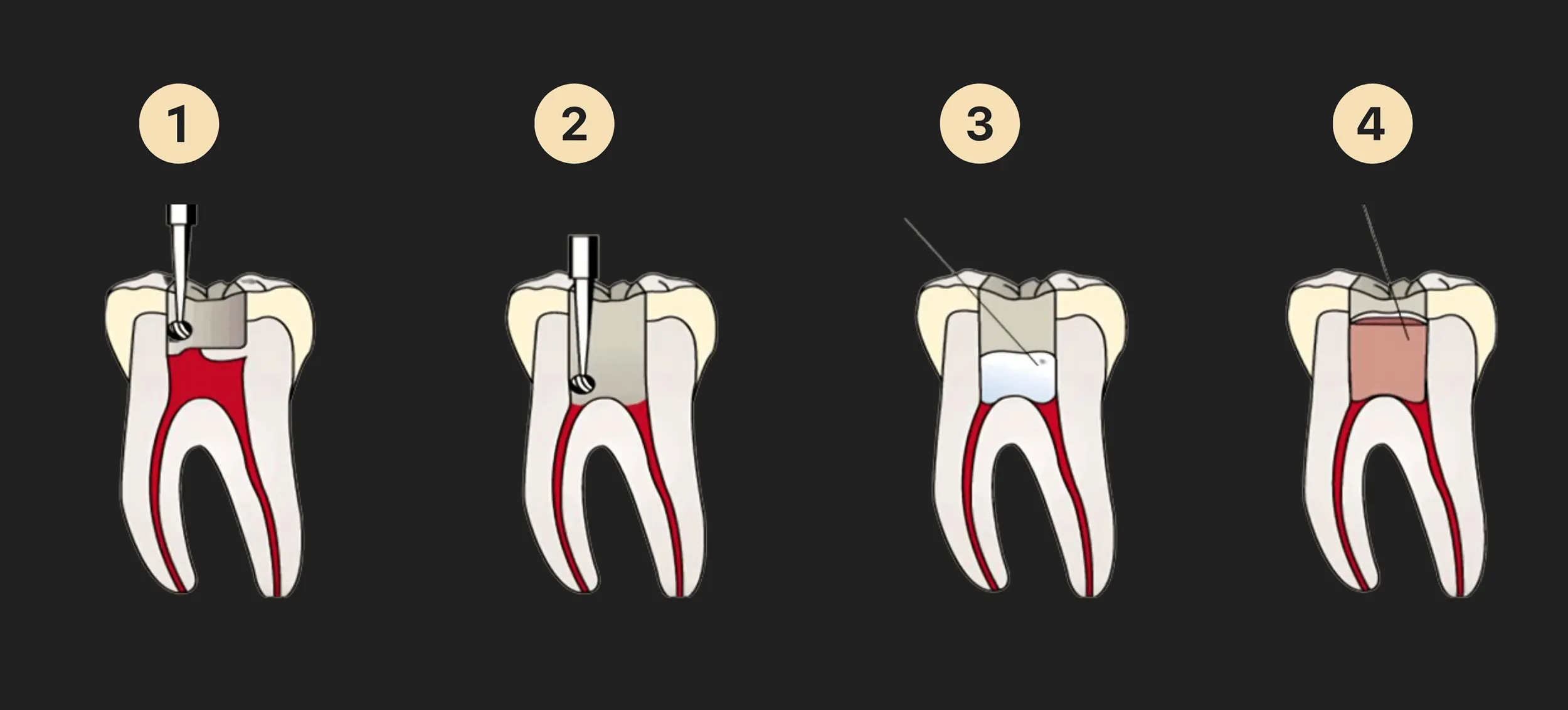What is Pulpotomy?
A pulpotomy is a common dental procedure often referred to as a “baby root canal” due to its frequent use in treating children’s teeth. This procedure is typically performed to preserve a decayed or injured tooth, particularly when the pulp (the innermost part of the tooth that contains nerves and blood vessels) becomes infected or inflamed. Unlike a traditional root canal that removes all the pulp from the canals of the tooth, a pulpotomy only removes the diseased pulp in the crown portion of the tooth, while leaving the pulp in the roots intact. This procedure is vital in preventing the spread of infection and preserving the tooth until it naturally falls out and is replaced by a permanent one.
The Pulpotomy Treatment Process
A pulpotomy is a straightforward procedure that involves several steps to alleviate pain and preserve the affected tooth.

Diagnosis and Anesthesia
The first step in a pulpotomy procedure involves a thorough examination of the tooth by a dentist. This may include visual inspection, palpation, and X-rays to confirm the extent of the decay or damage. Once the need for a pulpotomy is determined, local anesthesia is administered to numb the area and ensure the child’s comfort throughout the procedure.

Removal of Diseased Pulp
After the tooth is numbed, the dentist will remove the decayed portion of the tooth to access the pulp chamber. Using specialized dental instruments, the dentist carefully removes the infected or inflamed pulp from the crown of the tooth, ensuring that the pulp in the roots is untouched.

Placement of Medication and Filling
Once the diseased pulp is removed, a medicated dressing is placed in the pulp chamber to prevent infection and promote healing. This is then followed by the placement of a stainless steel crown to seal the tooth and restore its normal function.
The Benefits of Pulpotomies
A pulpotomy is a beneficial procedure that offers several advantages, particularly for children with decayed or damaged primary teeth.
Pain Relief
One of the primary benefits of a pulpotomy is immediate pain relief. Tooth decay and pulp inflammation can cause significant discomfort, and removing the affected pulp effectively alleviates this pain. This allows children to return to their normal activities without the distraction of toothache.
Tooth Preservation
A pulpotomy allows for the preservation of the affected tooth. By removing only the diseased portion of the pulp and leaving the healthy root pulp intact, the tooth can continue to function normally until it is naturally lost. This is particularly important for primary teeth, which hold space for the permanent teeth and aid in speech and dietary habits.
Prevention of Further Damage
By removing the infected or inflamed pulp, a pulpotomy prevents the spread of infection to the surrounding teeth and jawbone. This is crucial in maintaining overall oral health and preventing more serious dental issues down the line. With the right care and attention, a tooth that has undergone a pulpotomy can remain healthy and functional for the rest of its life.

